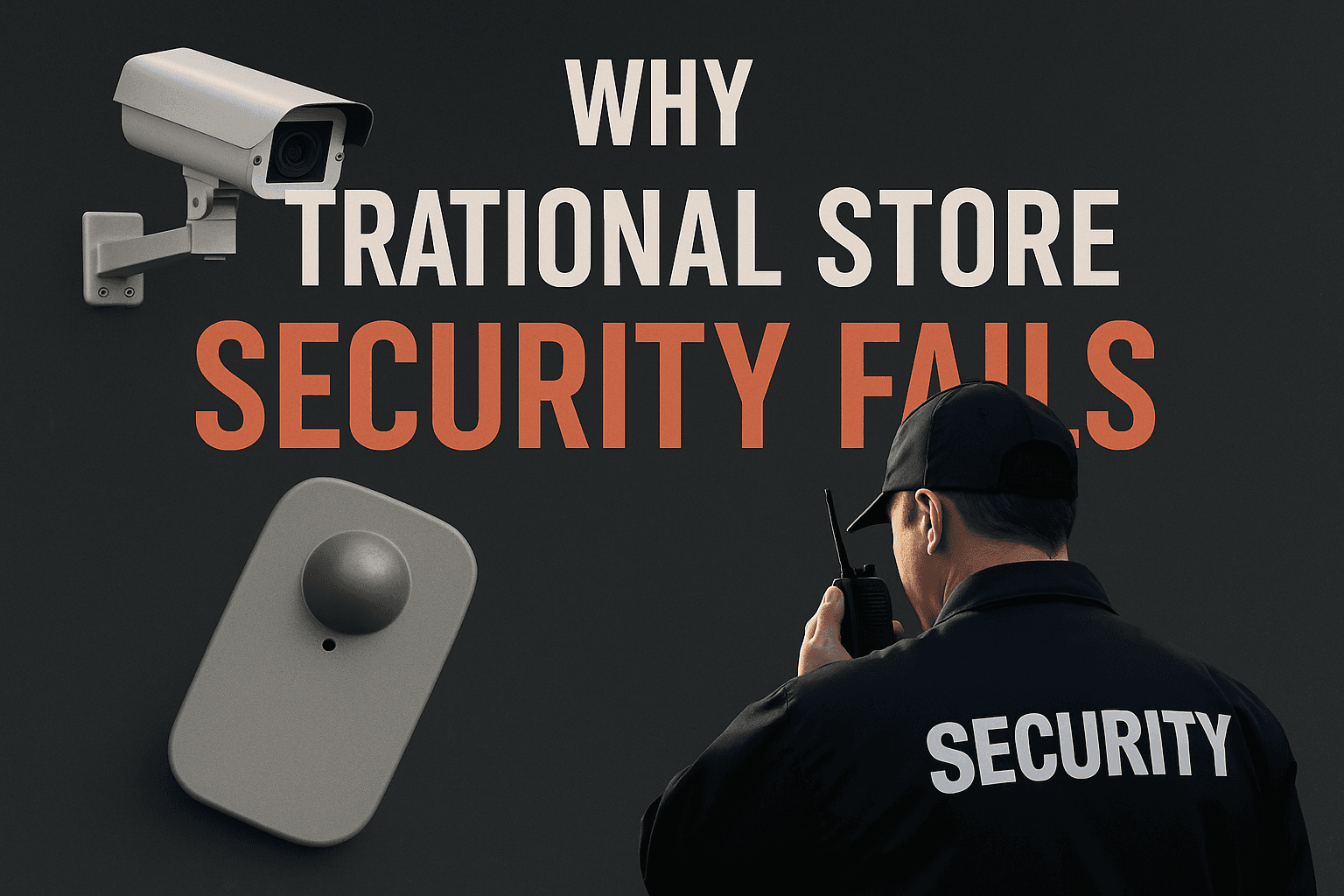Retail Shrink: Why Old-School Security Doesn’t Work
Articles
October 28, 2025

# Why Traditional Store Security Isn’t Enough
**Retail theft** — often called shrink — keeps rising despite cameras, EAS tags, and guards. Shrink reached **1.6%** of sales in 2022 (up from 1.4%), translating to **$112.1 billion** in losses. Below are the limits and blind spots, and why once goods leave the store, they are usually gone.
## Security Cameras: Watching but Not Stopping
CCTV is nearly ubiquitous. In practice, cameras often record rather than stop theft. One study noted **under 1%** of recorded footage is ever reviewed. Many shoplifters know unmonitored cameras pose little immediate risk.
Unless feeds are actively monitored with swift intervention, theft is merely documented. Disguises, sightline avoidance, or delayed review mean the item is long gone.
### Blind spots and practical limits
- **Coverage gaps:** Poor placement or large layouts create exploitable blind spots.
- **Delayed response:** Monitoring dozens of feeds in real time is hard; theft is often discovered after the fact.
- **Passive deterrence:** Professionals are not scared of unmonitored cameras; perceived identification risk is low.
- **Reliance on humans:** Cameras do not stop people; staff must notice and act promptly.
**Reality check:** Cameras help investigations, but without active monitoring they rarely prevent crime in real time.
## EAS Tags and Alarms: Deterrent with Loopholes
EAS tags and gates alert when unpaid items cross the threshold, but several issues blunt their impact.
### Limitations
- **In-store only:** Alarms sound as a thief exits. If no immediate stop happens, it becomes a farewell siren.
- **False alarms:** Tag pollution desensitizes staff and customers; genuine events get ignored.
- **Easy to foil:** Tag removal, dressing rooms, booster bags, and missed deactivations defeat systems.
- **Modest prevention rate:** Real-world shrink reduction averages **about 19%**, leaving most losses untouched.
- **No physical barrier:** Beepers do not lock doors; they rely on attentive, available staff.
**Bottom line:** Helpful for casual theft, but far from foolproof — especially against organized groups.
## Security Guards and LPOs: Finite and Fallible
Humans can confront thieves, but coverage, policy, and safety constraints are easy to exploit.
### Key challenges
- **Limited coverage:** One or two guards cannot be everywhere; large stores create natural blind spots.
- **No-chase policies:** **About 41%** of retailers bar employees from stopping shoplifters; many guards observe or report only.
- **Safety and escalation:** Rising aggression (**about 88%** report increases) forces de-escalation and stand-down.
- **Legal protocols:** Continuous observation and strict criteria are required; savvy thieves break the chain.
- **Low apprehension rate:** Roughly **2%** (about 1 in 48) of shoplifters are caught; many are not turned over to police.
## Once Merchandise Leaves, It Is Almost Gone
### Why recovery is rare
- **Tiny recovery rate:** Average recovery for stolen property (excluding autos) is **under 4%**.
- **Low priority:** Misdemeanor-level theft rarely gets active investigation once the trail is cold.
- **Identification challenges:** Disguises and poor imagery hinder identification.
- **Rapid fencing:** Goods move to accomplices or marketplaces within hours.
- **Threshold gaming:** Offenders keep below felony limits; cross-jurisdiction pursuit is uncommon.
Meaningful disruption often requires targeting resale networks and organized theft supply chains, not just in-aisle behavior.
## The Shrinkage Problem Persists
Shrink has hovered **about 1.5–2%** for decades and recently ticked up to **1.6%**. External theft represents roughly a third of shrink — on the order of **$45–70 billion** annually — despite heavy investment in traditional measures.
### Quick recap
- **Cameras:** About **2%** apprehension; most footage goes unwatched.
- **EAS:** False alarms and workarounds; **about 19%** average shrink reduction.
- **Policies:** Four in ten retailers limit intervention; visibility deters, action lags.
- **Recovery:** **Under 5%** once items are outside.
- **Net:** Shrink is not shrinking.
## Conclusion: Old-School Security Is Necessary, Not Sufficient
Cameras, tags, alarms, and guards create a baseline, but gaps (unmonitored feeds, alarm fatigue, intervention limits) plus organized crime sophistication mean diminishing returns. Deterrence improves with the **certainty** of being stopped or caught.
Progress requires layered solutions: smarter monitoring with real-time intervention, better training and policies, store design, data-driven patterning, marketplace enforcement against resale, and targeted law-enforcement cooperation.
